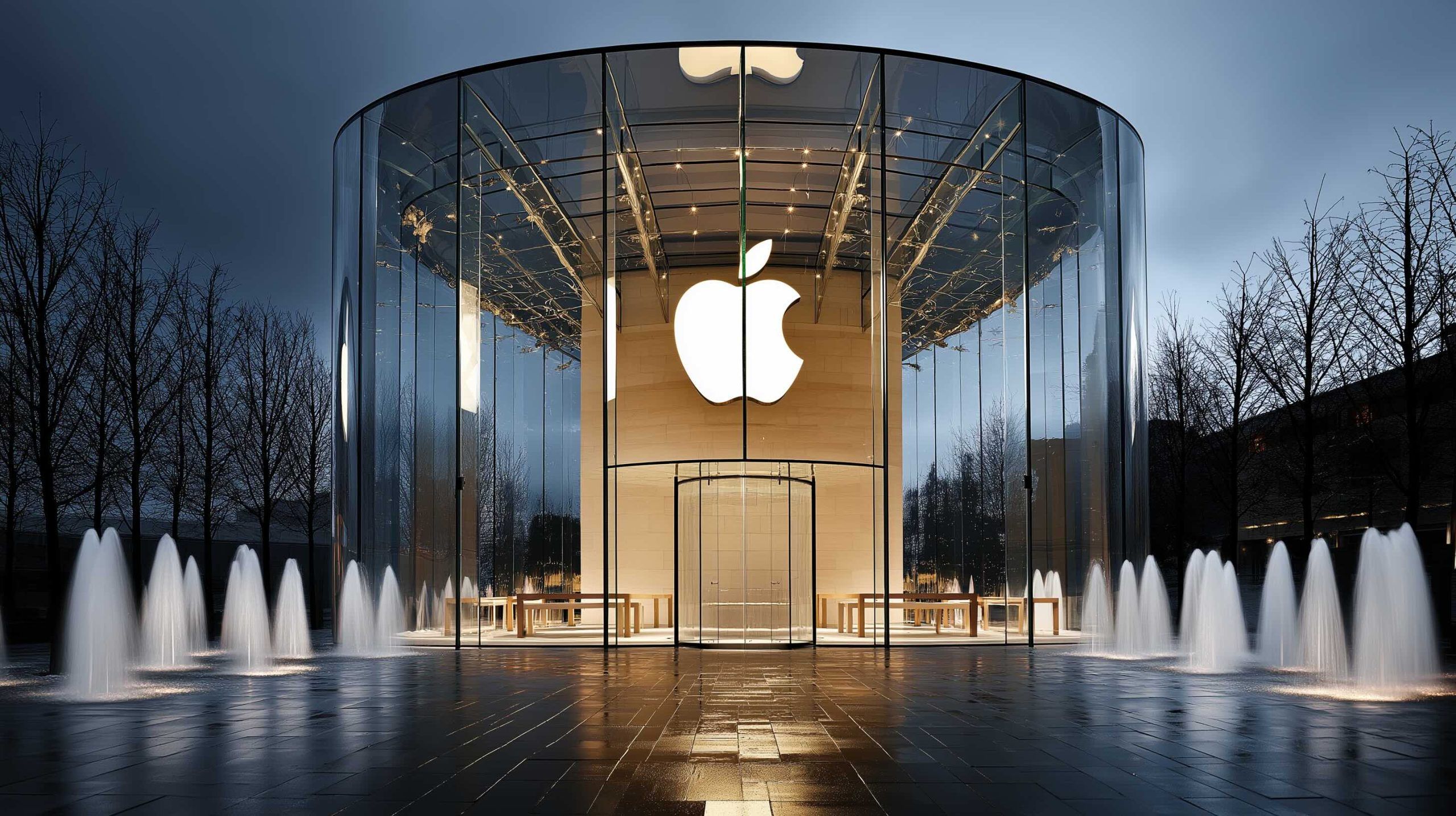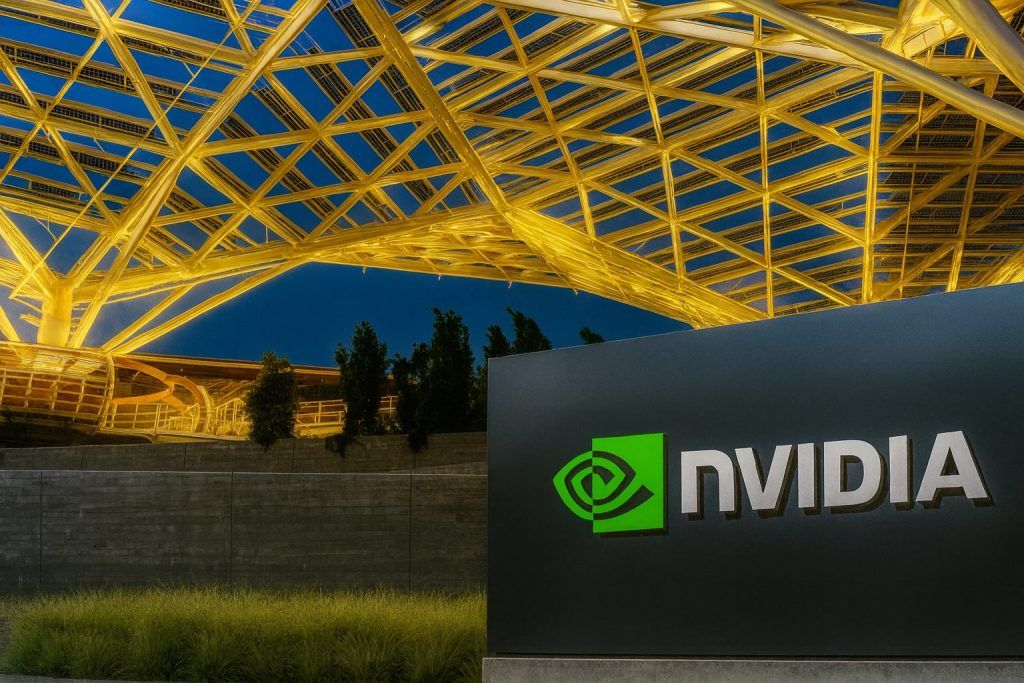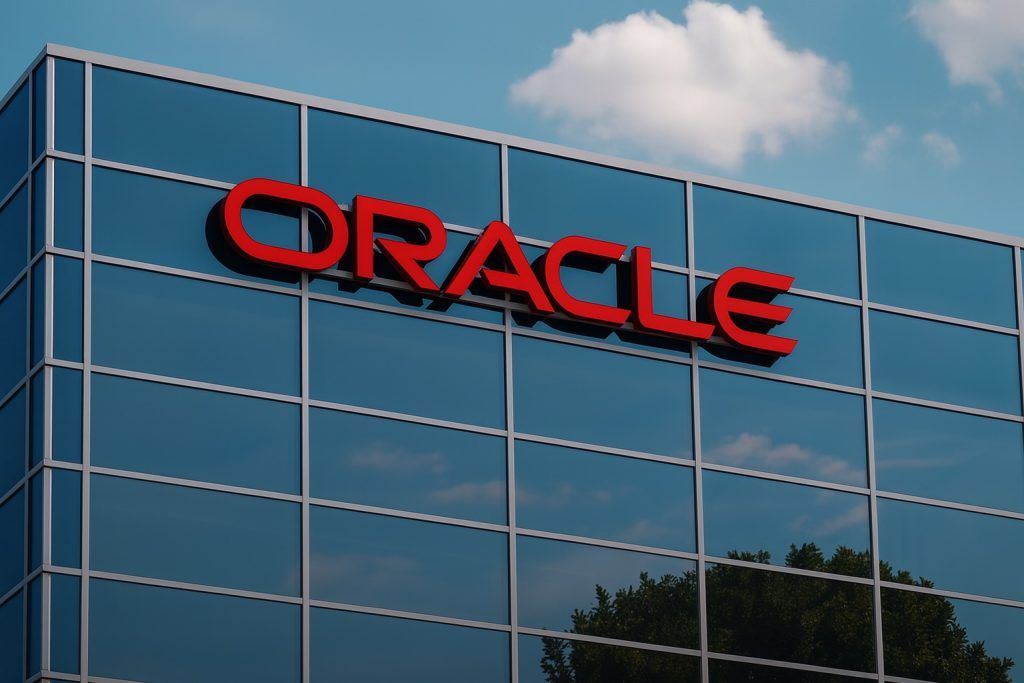- AAPL Near Record Highs: Apple (NASDAQ: AAPL) stock traded around $247–$249 per share this week (Oct. 17, 2025), hovering just shy of its all-time high (~$260) [1] [2]. The stock is roughly flat for 2025 (+≈2% YTD) after a choppy year, underperforming many peer tech names despite recent gains [3] [4].
- New M5 Devices Launched: Surprise rollout: On Oct. 15, Apple unveiled new M5 chip-powered products via press release – including a refreshed 14″ MacBook Pro, updated iPad Pro, and a second-gen Vision Pro headset – without raising prices from previous models [5]. The M5, built on a 3nm process, delivers major AI performance boosts, letting the new MacBook run advanced AI models on-device [6] [7].
- iPhone 17 “Supercycle” Buzz: Last month, Apple rolled out its iPhone 17 lineup (standard, Pro, and a new ultra-thin mid-tier “iPhone 17 Air”) alongside Apple Watch Series 11 [8] [9]. Prices were held flat versus last year (e.g. iPhone 17 Pro starts at $1,099 for 256GB, same as iPhone 16 Pro) despite higher costs [10] [11]. Early data show strong demand – iPhone 17 sales are trending 10–15% above last year’s launch, fueling talk of a long-awaited upgrade “supercycle” [12].
- CEO Succession in Motion: Apple is mapping out leadership changes even as Tim Cook remains at the helm. Hardware chief John Ternus (age 50) is widely cited as the “leading contender” to succeed Cook eventually [13]. In a carefully managed plan, long-time COO Jeff Williams will retire by end-2025, with operations passing to veteran exec Sabih Khan; Apple also installed a new CFO this year – all part of “careful succession planning” to ensure continuity [14].
- Wall St. Split on Outlook:Analysts are divided. Bulls like Wedbush’s Dan Ives see a potential “golden era” for Apple – Ives hiked his AAPL price target to $310, citing booming iPhone 17 demand [15]. But skeptics are cautious: Jefferies recently downgraded AAPL to Underperform (target ~$205), arguing the stock already reflects “excessive expectations” for next-gen devices [16]. Consensus 12-month targets sit in the mid-$250s, implying only modest upside from current levels [17].
- Macro Influences: Broader tech rally and risks frame Apple’s recent moves. The Nasdaq climbed last week (Oct. 15) as strong bank earnings and an AI-chip surge lifted sentiment [18]. However, Apple faces external headwinds: U.S.–China trade tensions flared up after new tariff threats, underscoring Apple’s supply chain exposure [19]. Fed Chair Jerome Powell’s hints at potential interest rate cuts have offset some market jitters [20], but high rates and geopolitics remain wildcards for Apple’s richly valued stock.
AAPL Stock Update: Near Highs After Volatile Week
Apple’s stock is trading near record levels as of October 17, 2025, after navigating a volatile stretch in global markets. Shares oscillated around the mid-$240s this week – just a few dollars below Apple’s all-time intraday high (~$260) set in late September [21]. On Wednesday Oct. 15, AAPL briefly rallied (+0.6%) on news of Apple’s latest chip launch, before slipping ~0.9% on Thursday amid some profit-taking [22] [23]. As of midday Friday, the stock was little changed, holding above both its 50- and 200-day moving averages – a sign of positive momentum in recent weeks [24].
Year-to-date, Apple’s stock performance has been muted. Despite flirting with new highs, AAPL is only up roughly 1–2% in 2025, essentially flat on the year [25]. That pales next to the big gains in other tech giants – for instance, Nvidia is +35% YTD, Microsoft +23%, and Alphabet +29% [26]. Apple’s more modest rise reflects both its earlier lofty valuation and a shift in investor focus toward AI-driven “hyper-growth” plays this year [27] [28]. Still, Apple’s sheer size (market cap ~$3.8 trillion) and stable cash flows make it a cornerstone stock for many investors, often proving resilient during market turmoil [29]. Case in point: during an Oct. 14 selloff sparked by trade war fears, Apple’s dip was brief and “surprisingly resilient amid the crossfire,” as one market commentator noted [30]. The stock closed essentially flat that day (~$248), recovering from early losses while more volatile peers fell sharply [31].
Upcoming Earnings: Investors are now in “wait-and-see” mode ahead of Apple’s next earnings release in late October [32]. In its last quarterly report (fiscal Q3 2025, released in July), Apple beat expectations with $94.0 billion revenue (+10% YoY) and EPS $1.57 (vs $1.43 forecast) [33]. Every major business segment grew double-digits, and gross margin hit ~46% – underscoring robust fundamentals [34]. Apple even raised its outlook, guiding for mid- to high-single-digit revenue growth in the current Q4 holiday quarter [35] [36]. Those strong results and guidance helped fuel the stock’s late-summer rebound [37]. With earnings due soon, investors will watch whether Apple confirms that momentum – particularly through iPhone 17 sales – or issues any cautious notes amid the uncertain economy.
New Products Fuel Optimism: M5 Chip Debuts and iPhone 17 Demand
Apple’s latest product cycle has injected fresh optimism into the stock narrative. This week the company surprised markets by launching several new devices powered by its next-generation M5 chip – all via press releases rather than a typical splashy event. On October 15, Apple unveiled a revamped 14-inch MacBook Pro, updated 11″ and 13″ iPad Pro models, and a Vision Pro Gen 2 mixed-reality headset, each upgraded with the in-house M5 silicon [38]. Notably, Apple kept prices unchanged: the M5 MacBook Pro still starts at $1,599, iPad Pro at $999, and Vision Pro 2 at $3,499 – bucking the inflationary trend of annual price hikes [39] [40].
The new 3nm M5 chip is at the heart of these devices, marking Apple’s latest leap in custom silicon. It boasts significant performance gains, especially for AI and graphics tasks. Apple says the M5 delivers 4× the AI processing power of the previous M4 generation and ~15% faster CPU performance [41]. In practical terms, the M5 MacBook Pro can even run large language models (LLMs) and other advanced AI applications on-device, thanks to expanded neural engines [42] [43]. This strategy – debuting Apple’s most advanced chip in high-end iPads and Macs – aims to woo creative professionals and fend off competition from AI-oriented chips by Intel and Qualcomm [44] [45]. Early market reactions were positive: Apple’s stock got a small bump after the M5 announcement, as investors saw it aligning with the broader AI trend driving tech stocks [46] [47].
The company’s flagship iPhone 17 launch last month (Sept. 2025) is also a key piece of Apple’s growth story. The iPhone 17 family – including the standard and Pro models and a new mid-range “iPhone 17 Air” – debuted with much fanfare. CEO Tim Cook touted the lineup as “the biggest leap ever for iPhone,” highlighting innovations like the A19 chip and improved cameras [48] [49]. Crucially, Apple held prices steady despite higher component costs and tariff pressures: the base iPhone 17 starts at $799 (for 256GB, double last year’s base storage), and the iPhone 17 Pro starts at $1,099 for 256GB – the same price as the iPhone 16 Pro, though Apple eliminated the prior 128GB/$999 tier [50] [51]. Similarly, Apple’s new Apple Watch Series 11 and AirPods Pro 3 saw feature upgrades (like a blood-pressure monitor in the Watch) with no price increases [52] [53].
This pricing strategy appears to be paying off. Early indicators suggest strong uptake of the iPhone 17. Industry reports and analysts indicate iPhone 17 pre-orders and early sales are running 10–15% higher than last year’s iPhone 16 cycle [54]. “This new device will bring a sense of newness to the iPhone, which has remained the same for too long,” said Paolo Pescatore, an analyst at PP Foresight, adding that the “much-improved iPhone lineup looks impressive” and positions Apple well across different customer segments [55]. Wedbush Securities estimates roughly 315 million of the 1.5 billion active iPhones worldwide are over four years old – a huge pool of potential upgrades driving what it calls a “pent-up consumer supercycle” of refresh demand [56]. This optimism helped push AAPL shares upward in late summer as the iPhone 17 hit the market.
Beyond phones, Apple is also refining its augmented reality (AR) and wearable offerings. The new Vision Pro 2 headset launched this week looks similar to 2024’s original Vision Pro but swaps in the M5 chip for a significant boost in on-device processing [57] [58]. The second-gen headset also features a higher 120Hz refresh rate and improved comfort, aiming to spur broader adoption of Apple’s pricey AR device. At the same time, Apple is reportedly pivoting its AR strategy: according to Bloomberg’s Mark Gurman, Apple has scrapped a planned “Vision Air” – a lower-cost AR headset – and is instead reallocating resources toward developing true AR smart glasses for the coming years [59]. Gurman says Apple is now working on two AR glasses models (one that pairs with an iPhone by 2027, and another with built-in displays to rival Meta’s Ray-Ban Stories sooner) [60]. This strategic shift suggests Apple is playing a longer game in AR, focusing on forms that could have more mass-market appeal than a watered-down ski-goggle headset. For now, the AR/VR category remains niche – but Apple’s continued investment signals it sees immersive wearables as a key long-term growth area.
Leadership Changes and Supply Chain Strategy
As Apple rolls out new products, it’s also quietly preparing for the company’s next era of leadership. CEO Tim Cook (age 64) remains firmly in charge with no immediate plans to step down, but recent reports confirm Apple has a succession plan in motion [61]. The leading candidate to eventually take the reins is John Ternus, Apple’s SVP of Hardware Engineering. Ternus, 50, has been with Apple since 2001 and was prominently featured in recent product launches – a sign that Apple’s board is grooming him as Cook’s heir apparent [62] [63]. He’s seen as a “product guy” with the charisma and experience to lead Apple, much as Cook himself was groomed under Steve Jobs.
In addition to Ternus, Apple’s C-suite is undergoing a generational handoff. Longtime Chief Operating Officer Jeff Williams – often viewed as Cook’s #2 – will retire at the end of 2025, after 24 years at the company [64]. Williams’ responsibilities are being transitioned to Sabih Khan, a 30-year Apple veteran who currently heads operations [65]. Apple also has a new Chief Financial Officer: Kevan Pegula (formerly head of corporate finance) quietly took over as CFO in early 2025, replacing Luca Maestri [66]. These moves, though gradual, amount to the biggest executive reshuffle in Apple’s recent history. The company characterizes them as “careful succession planning” – emphasizing stability and continuity while mapping out its future [67]. Apple has reassured investors that Cook isn’t leaving imminently, and that these leadership changes are long-planned to maintain the culture and momentum that have made Apple the world’s most valuable company [68].
Analysts generally view the succession plan positively, with the caveat that execution will be key. “All signs point to an upcoming CEO transition,” noted Bloomberg’s Mark Gurman, but he adds that Cook likely stays on for a few more years to guide the process [69]. Some experts believe a fresh leader like Ternus – whenever he takes over – could energize Apple’s narrative, especially if paired with continued product innovation [70] [71]. For now, the leadership shuffle remains mostly behind-the-scenes, and Wall Street’s focus stays on Apple’s results and roadmap. But the fact that Apple is planning for life after Tim Cook is notable: it signifies a passing of the torch in the mid-term future, which could subtly influence investor sentiment as that timeline firms up.
In tandem with these leadership moves, Apple is navigating complex supply chain and geopolitical challenges. A major concern is Apple’s heavy reliance on China for manufacturing, amid an era of rising U.S.–China tensions. This came into sharp focus on Oct. 14, when President Trump suddenly threatened to impose 100% tariffs on all Chinese imports starting Nov. 1, prompting Beijing to retaliate with its own tech export curbs [72]. The news sent shockwaves through global markets – Apple’s stock sagged early on the tariff scare, highlighting the risk around its China-centric production, before rebounding later in the day [73]. Apple’s leadership is taking steps to mitigate such risks. CEO Tim Cook flew to China in October to meet with officials, reportedly assuring them that Apple will “boost investment in China” and maintain strong ties to its largest overseas market [74]. At the same time, Apple is accelerating efforts to diversify its manufacturing footprint beyond China. According to Reuters, Apple aims to produce the majority of iPhones bound for the U.S. in India by 2026, up from roughly 20% today [75] [76]. The company has been working with partners like Foxconn and Tata to ramp up Indian iPhone output – a strategy to navigate potential tariffs and avoid supply disruptions [77]. Already in 2025, Apple dramatically increased iPhone exports from India to the U.S. to get ahead of tariff threats [78]. This dual approach – engaging China diplomatically while building out production in India and other regions – is Apple’s bid to shore up its supply chain resilience. It’s a delicate balancing act, but crucial for a company whose fortunes are tied to global trade stability.
Wall Street Forecasts: Bulls vs. Bears on Apple’s Future
Apple’s solid execution in 2025 has kept most analysts optimistic, yet divided on how much upside remains for the stock. On one side, bulls argue that Apple is entering an upgrade supercycle and expanding into new markets that could drive earnings higher over the next year. Leading the bullish camp, Wedbush analyst Dan Ives recently reaffirmed his conviction that Apple is on the cusp of a “golden era”. Citing stronger-than-expected iPhone 17 sales and momentum in services and wearables, Ives raised his 12-month price target to $310 – which is the highest target on Wall Street [79]. He believes Apple’s massive base of aging iPhones sets the stage for a prolonged replacement cycle, and he also points to Apple’s ever-growing Services revenue and breakthroughs in custom chips (like the M5) as justification for a richer valuation [80] [81]. In Ives’ words, iPhone 17 demand has been “a major surprise to the upside,” and he sees the new product launches (including Vision Pro) as reinforcing Apple’s ecosystem lock-in [82].
Most analysts echo a positive long-term view, if not to the extremes of Ives. Bank of America recently reiterated its “Buy” rating and $270 target, seeing steady growth in iPhone and services ahead [83]. Morgan Stanley is also bullish, upping its target to ~$300, though the firm noted that achieving a substantially higher stock price (its bull-case scenario approached $370) would likely require Apple to launch a game-changing new category like a foldable iPhone or other major innovation [84]. In other words, even some bulls acknowledge that Apple’s next leg up might hinge on “the next big thing” materializing in coming years.
On the other side of the debate, bearish voices are growing louder about Apple’s valuation. Investment firm Jefferies made waves at the end of September by downgrading Apple to Underperform – essentially a Sell rating [85] [86]. Jefferies analysts argue that lofty expectations for the iPhone 17 cycle, Vision Pro, and other upcoming products are largely “already baked into” Apple’s $3+ trillion market cap [87]. With the stock near record highs, they see an unfavorable risk/reward unless Apple delivers a big new hit. Jefferies set a $205 price target (well below current levels), implying Apple could fall if any hiccups emerge in execution or demand [88]. They also highlight Apple’s rich valuation – around 38× trailing earnings at ~$248/share – which is high by the company’s historical standards [89]. Such a premium multiple is tough to justify, bears say, given Apple’s expected revenue growth is in the single digits. Regulatory risks add to their caution: changes like the EU’s Digital Markets Act (which will force Apple to open iOS to third-party app stores by 2026) could pressure Apple’s services revenue moat over time [90] [91]. Additionally, some skeptics worry that Apple has been “late to the game” in hot areas like generative AI, potentially lagging rivals in the next tech revolution [92]. If AI is the new frontier, they argue, Apple might need heavy R&D or acquisitions to catch up, which could weigh on margins [93].
Consensus View: The push and pull between Apple’s bulls and bears leaves Wall Street’s consensus in a cautious middle ground. Surveys of analysts show the average 12-month price target for AAPL in the mid-$250s, only a few percent above the current price [94] [95]. In effect, most analysts see limited near-term upside for the stock – a reflection that Apple’s recent rally and size leave less room for explosive growth. Yet notably, very few analysts recommend selling Apple either. The vast majority still rate it a Buy or Overweight [96], pointing to Apple’s unparalleled brand loyalty, huge cash generation, and consistent execution. As one fund manager put it, Apple is “a stock you can underweight, perhaps, but not one you comfortably short” [97]. Even bears concede Apple is a phenomenal company; their concerns are more about valuation risk at these heights rather than Apple’s fundamentals [98]. This nuanced stance underscores why Apple remains a core holding for many – it’s a stable, profitable franchise, but with expectations so high, future stock gains are expected to be gradual.
Macro Environment: Interest Rates, Trade Tensions, and Tech Trends
Several macroeconomic and sector-wide factors are influencing Apple’s stock trajectory this year. A primary theme is the tug-of-war between high interest rates and cooling inflation. Throughout 2025, the Federal Reserve’s tighter monetary policy – with interest rates at multi-year highs – has generally put pressure on high-valuation tech stocks like Apple (higher rates increase the discount on future earnings). However, there are signs this headwind may abate. In mid-October, Fed Chair Jerome Powell hinted that softening labor market data could open the door to potential rate cuts in coming months [99]. Those dovish signals contributed to a market rebound: in fact, the day Powell spoke, the Dow swung from a 300-point loss to a solid gain and the Nasdaq erased a nearly 1% drop [100] [101]. Apple’s stock benefited from this relief rally, as investors anticipated a friendlier environment for growth stocks if borrowing costs peak or decline. Still, uncertainty remains around the Fed’s path – any surprise uptick in inflation or hawkish stance could revive rate-driven volatility for Apple and its peers.
Geopolitics are another wild card. Apple’s close ties to China make it especially sensitive to U.S.–China relations, which have seesawed in recent months. The aforementioned tariff scare on Oct. 14 – with the U.S. and China trading threats of punitive levies – exemplified the risk. Apple’s heavy reliance on Chinese manufacturing (and a huge market in China for iPhones) means any escalation of trade barriers or nationalism can directly hit its sales and costs. The company has already warned that existing U.S. tariffs cost it billions in expenses [102]. Thus far, cooler heads have often prevailed – for example, after that flare-up, officials signaled plans for U.S.-China trade talks, helping calm markets [103]. But trade policy remains a swing factor for Apple’s outlook. Notably, China’s economy has also slowed in 2025, and its government has tightened scrutiny on foreign tech. Beijing even reportedly urged some officials to stop using iPhones (though Apple’s CEO downplayed the impact) – showing Apple’s unique position as both a beneficiary and a target in China. To hedge these risks, Apple’s aforementioned supply chain diversification to India is a strategic move that analysts applaud [104] [105]. It won’t happen overnight, but reducing dependence on China could make Apple more resilient to global turbulence in the long run.
Meanwhile, the tech sector’s broader trends have been a double-edged sword for Apple. In 2023–2025, a frenzy over artificial intelligence (AI) has driven huge gains in chipmakers, cloud companies, and others seen as AI leaders. Apple – more of a hardware and ecosystem play – has not been the poster child of the AI trade, which partly explains its stock lagging hotter names like Nvidia [106]. However, Apple is far from absent in AI: it has quietly invested in on-device AI features (like the new “Image Playground” in iOS and improved Siri intelligence), and its powerful chips (A-series for iPhone and M-series for Mac) increasingly emphasize neural processing. The new M5 chip is a case in point, intended to keep Apple competitive in the AI-powered device arena [107] [108]. There is speculation Apple may also be developing its own large language model or planning AI-centric acquisitions [109]. If Apple can articulate a more compelling AI strategy – or if consumer AI shifts toward on-device applications where Apple excels in silicon – it could bolster investor confidence.
In the nearer term, Apple’s stock often moves in tandem with the overall market mood on tech. Recent data points have been mixed: strong Q3 earnings from big banks and retail giants have signaled resilience in the U.S. economy, giving tech stocks a lift [110]. However, concerns like the potential U.S. government shutdown (a political standoff earlier this month) and higher oil prices have at times spooked the market, tempering rallies. For Apple, which is part of the “Magnificent Seven” mega-cap tech cohort, broad index trends matter. When the Nasdaq 100 climbs, Apple typically benefits from passive inflows; when there’s a selloff, Apple often attracts defensive buying due to its stable profits. This dynamic was evident on Oct. 14: as semiconductors plunged on trade war headlines, investors rotated into steadier names and Apple’s dip proved milder and short-lived [111]. In short, macro and sector forces – interest rate expectations, geopolitical headlines, and tech sentiment – continue to set the backdrop for AAPL’s day-to-day performance.
Outlook: Cautious Optimism Into Year-End
Heading into the final stretch of 2025, Apple’s outlook appears guardedly positive. The company is riding momentum from its successful product launches and a solid year of execution, but it also faces high expectations and external uncertainties. Most analysts agree that Apple’s fundamental story remains strong: the late-October earnings report will likely show whether the iPhone 17 “supercycle” thesis translates to sustained revenue growth. If Apple’s holiday-quarter guidance (which it already indicated would be robust at “mid to high single-digit” growth [112]) comes to fruition or even gets raised, that could refuel bullish sentiment. Likewise, the continued rollout of the M5 chip across the Mac, iPad, and eventually other products in 2026 points to Apple’s ability to leverage its vertical integration for performance and cost advantages. Apple’s expanding Services segment – from App Store to Apple TV+ and finance offerings – also provides a steady, high-margin revenue stream that investors value, especially as device sales mature.
That said, the upside for AAPL stock may be limited unless new catalysts emerge. With shares already near record highs and trading at ~30+ times forward earnings, the consensus on Wall Street is that Apple’s stock will advance at a measured pace rather than skyrocket. “Upside is modest unless new catalysts emerge,” one analyst noted, encapsulating the prevailing view [113]. Those potential catalysts could include breakthrough new products (for example, a foldable iPhone or AR glasses down the line), a game-changing AI development, or an external boost like interest rate cuts that expand market multiples. Barring such surprises, many experts see Apple’s stock grinding higher gradually – supported by share buybacks, stable iPhone demand, and services growth – but also prone to pullbacks on any missteps. If iPhone 17 demand were to cool off suddenly, or if production hiccups occur (for instance, from supply chain issues or China slowdowns), Apple’s richly valued shares could quickly reset downward. These are the “what ifs” that keep the forecast cautious.
In the near term, most analysts maintain a “Moderate Buy” rating on AAPL [114]. Investors are encouraged by Apple’s track record and balance sheet strength (over $50B in annual free cash flow), yet mindful of the valuation stretching. The next few months will bring important signals: Apple’s actual holiday sales figures, any news on regulatory changes (like how it will comply with Europe’s app store rules), and macro developments such as the Federal Reserve’s decisions or U.S.-China trade negotiations. Each of these could sway sentiment on Apple.
Overall, the picture for Apple Inc. is one of cautious optimism. The company sits at the intersection of multiple narratives – a maturing tech giant still delivering growth, a potential beneficiary of an enormous upgrade cycle, and a bellwether facing macro risks. For now, Apple’s steady execution has earned it the benefit of the doubt from much of the market. As long as the iPhone 17 sells briskly, new products like the M5 Macs and Vision Pro find their niches, and the global economy avoids major shocks, analysts expect Apple’s stock to hold its ground or slowly push into record territory [115]. Any dramatic moves upward will likely require a fresh catalyst, but few investors are betting against Apple’s ability to out-innovate and outlast. In the words of one market observer, Apple remains “a stock you buy and hold” – just with eyes open to the road ahead, which is not without speed bumps, but still filled with opportunity [116] [117].
Sources: Apple Inc. press releases and filings; industry analysts via TS2.tech and Reuters; market data from Nasdaq and MarketBeat; expert commentary from Wedbush, Jefferies, and others [118] [119] [120] [121]. All information is up to date as of October 17, 2025.
References
1. ts2.tech, 2. ts2.tech, 3. ts2.tech, 4. ts2.tech, 5. ts2.tech, 6. www.reuters.com, 7. www.reuters.com, 8. ts2.tech, 9. www.reuters.com, 10. www.reuters.com, 11. www.reuters.com, 12. ts2.tech, 13. ts2.tech, 14. ts2.tech, 15. ts2.tech, 16. ts2.tech, 17. ts2.tech, 18. ts2.tech, 19. ts2.tech, 20. ts2.tech, 21. ts2.tech, 22. ts2.tech, 23. ts2.tech, 24. ts2.tech, 25. ts2.tech, 26. ts2.tech, 27. ts2.tech, 28. ts2.tech, 29. ts2.tech, 30. ts2.tech, 31. ts2.tech, 32. ts2.tech, 33. ts2.tech, 34. ts2.tech, 35. ts2.tech, 36. ts2.tech, 37. ts2.tech, 38. ts2.tech, 39. ts2.tech, 40. www.reuters.com, 41. ts2.tech, 42. www.reuters.com, 43. www.reuters.com, 44. www.reuters.com, 45. www.reuters.com, 46. ts2.tech, 47. ts2.tech, 48. www.reuters.com, 49. www.reuters.com, 50. www.reuters.com, 51. www.reuters.com, 52. www.reuters.com, 53. www.reuters.com, 54. ts2.tech, 55. www.reuters.com, 56. ts2.tech, 57. ts2.tech, 58. ts2.tech, 59. ts2.tech, 60. ts2.tech, 61. ts2.tech, 62. ts2.tech, 63. ts2.tech, 64. ts2.tech, 65. ts2.tech, 66. ts2.tech, 67. ts2.tech, 68. ts2.tech, 69. ts2.tech, 70. ts2.tech, 71. ts2.tech, 72. ts2.tech, 73. ts2.tech, 74. ts2.tech, 75. www.reuters.com, 76. www.reuters.com, 77. www.reuters.com, 78. www.reuters.com, 79. ts2.tech, 80. ts2.tech, 81. ts2.tech, 82. ts2.tech, 83. ts2.tech, 84. ts2.tech, 85. ts2.tech, 86. ts2.tech, 87. ts2.tech, 88. ts2.tech, 89. ts2.tech, 90. ts2.tech, 91. ts2.tech, 92. ts2.tech, 93. ts2.tech, 94. ts2.tech, 95. ts2.tech, 96. ts2.tech, 97. ts2.tech, 98. ts2.tech, 99. ts2.tech, 100. ts2.tech, 101. ts2.tech, 102. www.reuters.com, 103. ts2.tech, 104. www.reuters.com, 105. www.reuters.com, 106. ts2.tech, 107. ts2.tech, 108. ts2.tech, 109. ts2.tech, 110. ts2.tech, 111. ts2.tech, 112. ts2.tech, 113. ts2.tech, 114. ts2.tech, 115. ts2.tech, 116. ts2.tech, 117. ts2.tech, 118. ts2.tech, 119. ts2.tech, 120. www.reuters.com, 121. www.reuters.com







